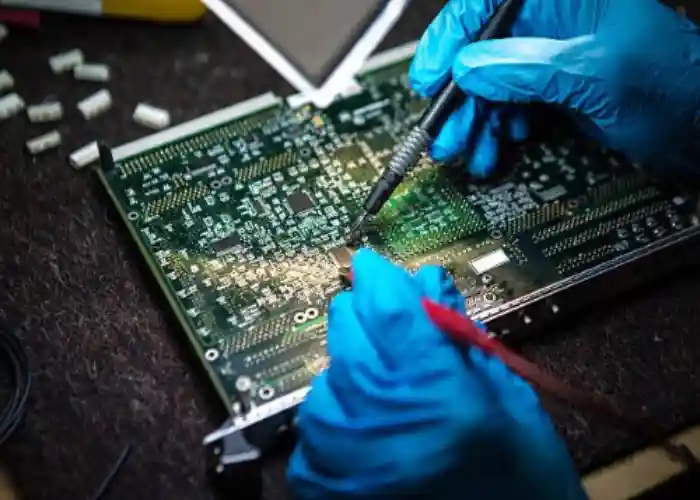When working with your PCB assembly manufacturer, effective communication is the linchpin to a successful outcome. By fostering an environment where information flows seamlessly between both parties, you set the stage for a collaborative and efficient project.
However, the real magic happens when this communication is not just a formality, but a strategic tool that can elevate the entire manufacturing process. So, how can you ensure that your communication is not just good but excellent? Let’s explore some key strategies that can transform your project from ordinary to outstanding.
Establishing Clear Project Requirements
To ensure a successful PCB assembly project, clearly defining project requirements is crucial. When working on a printed circuit board assembly, establishing clear project requirements from the outset is essential. This initial step sets the foundation for a smooth and efficient manufacturing process. By outlining specifics such as component types, quantities, quality standards, and delivery timelines, you provide your PCB assembly manufacturer with the necessary information to meet your expectations accurately.
Additionally, clear project requirements help prevent misunderstandings and delays, ensuring that the final product aligns with your needs. Open communication and transparency regarding project details will help streamline the assembly process and lead to a successful outcome.
Addressing Potential Challenges Upfront
By addressing potential challenges upfront, you can proactively mitigate risks and ensure a smoother PCB assembly process. When working with a PCB assembly manufacturer, it’s crucial to communicate any specific requirements or potential obstacles that may arise during the assembly process. Providing detailed information about the project scope, timeline constraints, and any unique components can help the PCB assembly company better prepare and allocate resources accordingly.
Additionally, discussing any past issues or concerns from previous projects can aid in identifying and resolving potential challenges early on. Open communication and transparency with your PCB assembly manufacturer will foster a collaborative environment, leading to more efficient problem-solving and a successful assembly process.
Building a Strong Partnership Foundation
Establishing a solid foundation for a strong partnership with your PCB assembly manufacturer is crucial for the success of your project. Open lines of communication, mutual respect, and clear expectations are key components in building this partnership.
By fostering a collaborative environment from the beginning, you can ensure that both parties are aligned in their goals and working towards a common objective. Regular check-ins, updates on project milestones, and being responsive to any concerns or questions will help maintain a positive relationship. Transparency about timelines, budget constraints, and technical specifications will also contribute to a strong partnership foundation.
Improving Product Quality Through Communication
Building a strong partnership foundation with your printed circuit board assembler paves the way for improving product quality through effective communication. By openly discussing your requirements, specifications, and expectations, you ensure that both parties are aligned on the quality standards needed for successful PCB assembly.
Clear communication about any design changes, component preferences, or quality control measures can help prevent misunderstandings that could impact the final product. Regular updates from the manufacturer on the assembly process, testing results, and any potential issues allow you to address quality concerns promptly.
Encouraging an environment of open communication and feedback between you and your PCB assembly manufacturer fosters a collaborative approach to enhancing product quality and ensuring that your expectations are met.
Enhancing Project Timelines and Efficiency
To optimize project timelines and efficiency with your PCB assembly manufacturer, prioritize clear communication and detailed planning from the outset. Clearly outline your project requirements, timelines, and expectations at the beginning of the partnership.
Regularly update the manufacturer on any changes or developments to ensure everyone is on the same page. Encourage open dialogue to address any potential issues promptly and keep the project moving forward smoothly.
Provide all necessary information and documentation promptly to avoid delays. By fostering a collaborative and communicative relationship, you can streamline processes, prevent misunderstandings, and ultimately enhance the overall efficiency of your PCB assembly project.
Ensuring Alignment on Expectations
Ensure that both your team and the PCB assembly manufacturer are aligned on expectations from the beginning to avoid misunderstandings and delays. Clearly communicate project requirements, such as specific tolerances, deadlines, and quality standards.
Discuss any potential challenges or unique specifications upfront to prevent issues down the line. Be open to feedback and seek clarification if needed to ensure mutual understanding.
Document agreements and decisions to serve as a reference point throughout the project. Regularly touch base with the manufacturer to address any concerns promptly and keep the project on track.
Conclusion
In conclusion, effective communication is essential for a successful PCB assembly project. By clearly defining project requirements, addressing challenges upfront, and building a strong partnership with your manufacturer, you can improve product quality, enhance timelines, and ensure alignment on expectations.
Open communication fosters collaboration, prevents misunderstandings, and ultimately leads to a successful outcome. Keep the lines of communication open and transparent to optimize your project’s success.
